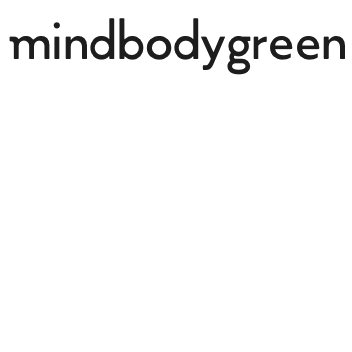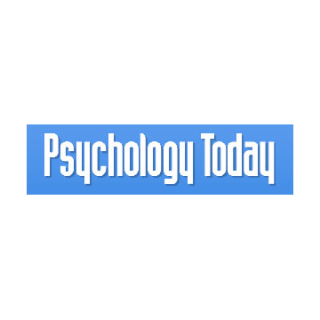An Introduction to Energy Healing
Many people believe that there is a common energy passing through and connecting all beings. Called “prana,” “qi,” or “life force” in various traditions, this energy supports and sustains us. The more connected we are to this energy, the more radiant and vital we feel. When our connection to the life force becomes blocked or misaligned, physical, mental, and emotional ailments can occur.
Modern science supports this philosophy, even as we continue to learn more every day. We know that everything in the universe is made of molecules and that these molecules vibrate at different speeds. This includes the molecules in our bodies. Our organs, muscles, bones, and other tissues are literally vibrating with energy.
Energy healing is the practice of manipulating the subtle or energetic body in order to promote and affect wellness.
What is energy healing used for?
The goal of any energy healing modality is to restore balance to the life force in order to promote and restore physical, mental, and emotional wellness. Energy healing is a type of complementary and alternative medicine (CAM) that can be used on its own or in conjunction with other modalities.
Who can benefit from energy healing?
Anyone can benefit from energy healing. These services are increasingly being offered in traditional Western medical settings, including New York’s Mount Sinai Medical Center, to improve care of patients who are being treated for serious, life-threatening illnesses. In one study, 57 percent of trials showed a positive treatment effect of remote Reiki sessions.
Energy healing is also believed to have benefits for people living with:
- stress
- depression
- anxiety
- addiction
- lingering effects of trauma
- insomnia
- chronic pain
- fibromyalgia
- auto-immune disorders
- migraines and chronic headaches
- back pain
- arthritis and other joint issues
In a relatively healthy person, energy healing can boost already-present feelings of happiness, focus, and spirit.
What is energy healing treatment?
Humans are innately attuned to energy. Imagine the feeling of walking into the home of someone who is grieving or a couple who’ve just had a disagreement. The space might feel down or heavy, like experiencing a low frequency or a slow vibration. On the other hand, entering a room where a party is occurring might feel stimulating and exciting, like a high frequency or a fast vibration. It’s uncomfortable to immerse yourself in either situation for an extended period of time: that’s energy.
We can’t see energy, but we can feel it giving off a positive or negative vibration that affects ourselves and those around us. An energy imbalance can cause us to feel unwell.
What are examples of energy healing?
Energy can be healed with the help of a skilled practitioner. Energy healing sessions can take many forms and can be hands-on, hands-off, or remote. There are many energy healing modalities to consider:
Acupuncture: Acupuncture is an ancient and traditional technique of Chinese medicine. In-person acupuncture sessions involve the insertion of thin needles into key points on the body’s energy pathways (meridians) to promote the flow of qi. It is believed that acupuncture stimulates the body’s ability to produce its own natural pain-fighting chemicals.
Acupressure: Acupressure is similar to acupuncture but, rather than use needles to improve the flow of energy, practitioners use their fingers, hands, and elbows—or even feet or special devices—to apply pressure to those key spots on the meridians. These sessions are hands-on.
Breathwork: With every breath, we draw the life force in and out of our body. Understanding and practicing specific inhaling, exhaling, and breath-retention techniques can be effective tools for energy healing. These skills are often learned from an expert and are practiced independently.
Crystal healing: Many energy healers believe that crystals are conduits for energy, each vibrating with its own frequency and promoting wellness in a different way. During an in-person session, a practitioner carefully places specific crystals at points on the body to promote energy healing.
EFT/Tapping: The Emotional Freedom Technique (EFT) is the rhythmic tapping of meridian points, sometimes while reciting a mantra or key phrase, to balance energy. This can be done with the help of a practitioner or on your own after some study.
Frequency healing: Various frequency healing modalities (singing bowls, sound baths, voice therapy, targeted frequencies) promote healing through the sound waves that can relax the body and balance energy. Frequency healing sessions are typically hands-off or remote. They can even be group experiences.
Magnetic therapy: Practitioners of magnetic therapy offer energy healing by placing different types of magnets on the body during in-person sessions. These magnets balance energy by attracting or repelling the tiny magnetic charges in the body’s molecules. Magnetic therapy can interfere with certain medical devices and it is recommended that you consult with your health care provider before your session.
Polarity therapy: Polarity therapy is an in-person practice similar to Reiki. Energy is balanced as a practitioner places their hands near the body. Polarity therapy also involves specialized massage.
Reiki: During a Reiki session, the practitioner acts as a conduit for energy. It flows through their hands and into the body, which intuitively knows how to take only as much as it needs. Reiki sessions can be hands-on, hands-off, or remote. Even in a hands-on Reiki session, there is no pressure or physical manipulation.
Therapeutic touch: Therapeutic touch is another Reiki-adjacent modality. Practitioners place their hands on or above the body and bring energy fields into balance, often with a sweeping motion. Therapeutic touch is usually offered as in-person sessions.
Yoga: Many of those who practice yoga feel more balanced after they get off their mats, especially after enjoying restorative yoga, a session in which relaxing poses are held for extended periods of time, often with the aid of props.
Zero Balancing: Operating from the belief that the deepest parts of our bodies store energy, zero balancing practitioners use their fingers to apply gentle pressure and traction to create balance points around the body, promoting enhanced relaxation and energy healing during in-person sessions.
How does a person feel after energy healing?
Everyone reacts to energy healing differently. People commonly report any or all of the following:
- a sensation of energy having moved or shifted
- deep relaxation
- feelings of peacefulness
- visions of color or other sensory experiences
- tears or other emotional release
- desire for deeper spiritual connection
- mental clarity
- improved focus
- better sleep
- lower blood pressure or heart rate
You Might Also Like Our Content on These Topics: Energy Healing for Animals, Energy Balancing, Chakras, Acupuncture






 . . . letting go of attachment to any way of believing or thinking has made me feel more expanded and almost transparent so that universal energy can just flow through me.
. . . letting go of attachment to any way of believing or thinking has made me feel more expanded and almost transparent so that universal energy can just flow through me.




